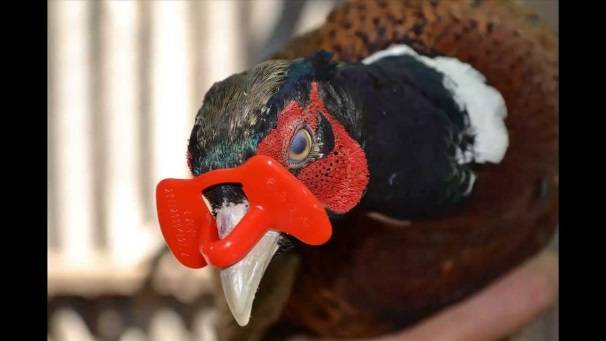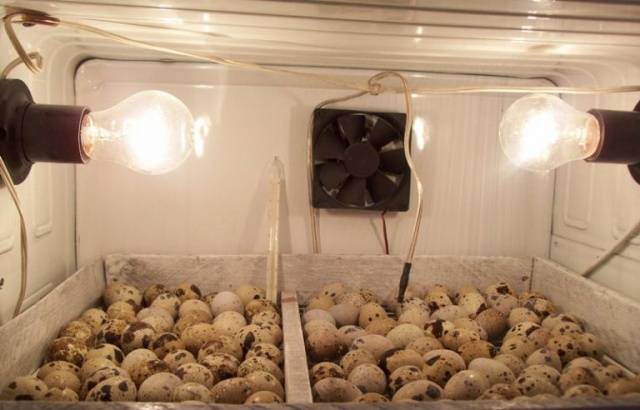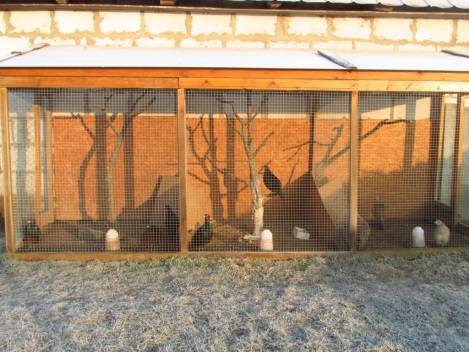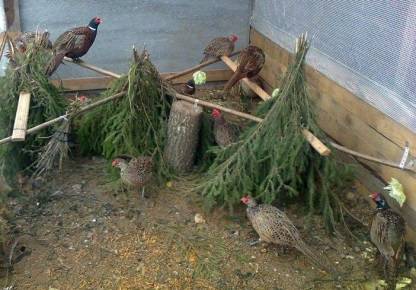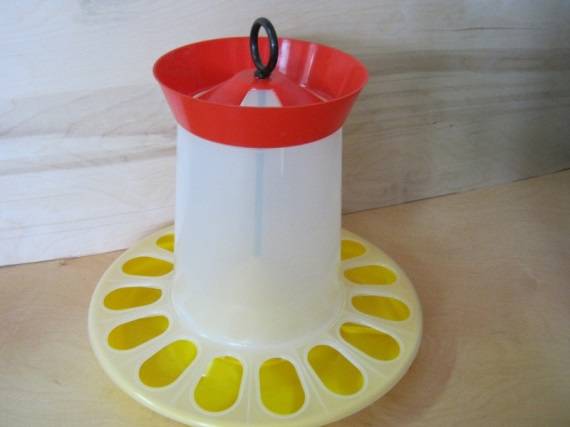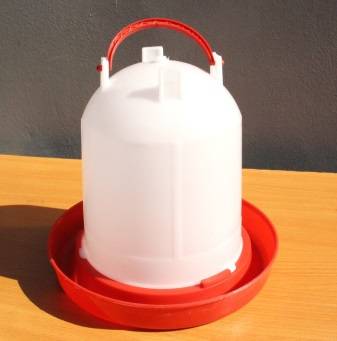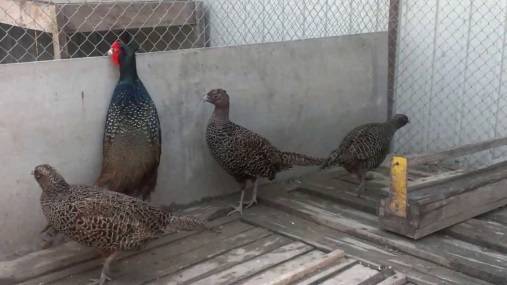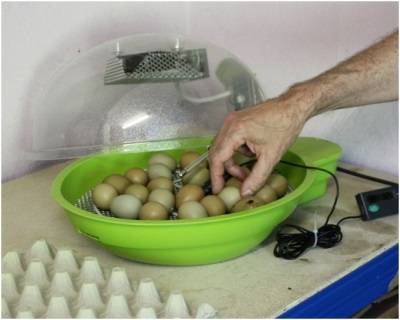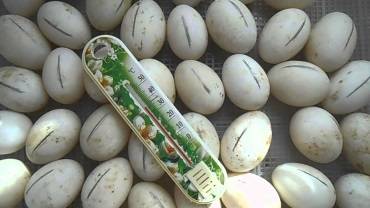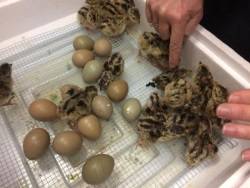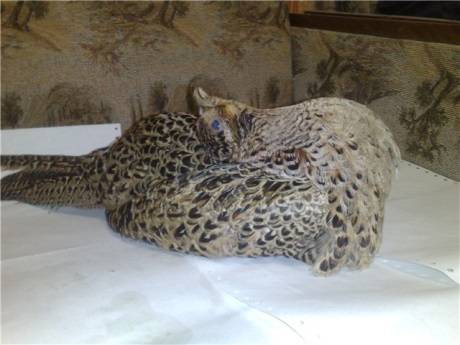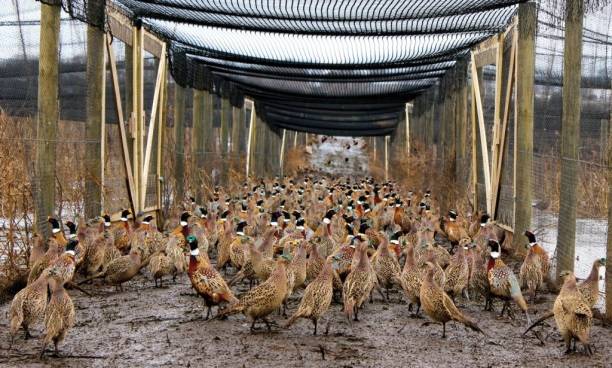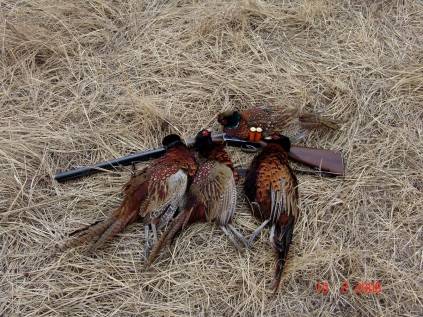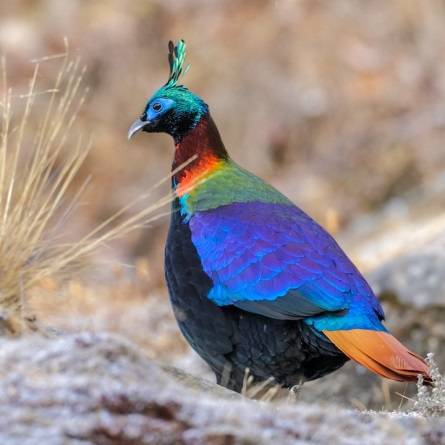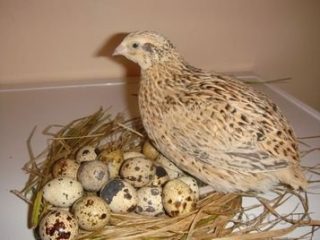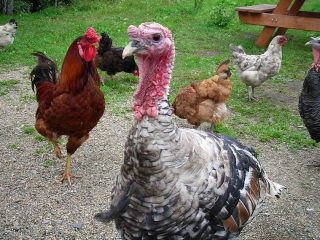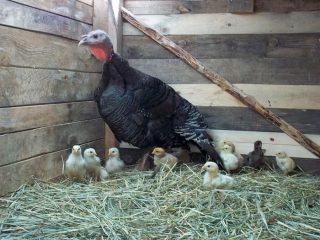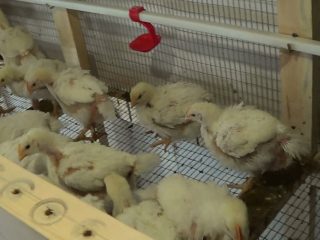Content
Pheasant birds are very interesting and beautiful birds that should be kept even just for decorative purposes, although the main purpose of their breeding is to obtain meat and eggs. There are a lot of varieties in this family and you can choose a bird for almost every taste. The most popular are various subspecies of the Common Pheasant, which are also called Hunting. But you can pick up and more exotic species belonging to other genera.
Although now pheasant birds have begun to displace quails from personal farms, there are certain difficulties with them:
- requires a lot of space for content;
- "Capriciousness" of eggs;
- pugnaciousness of birds;
- specific diet;
- strict seasonality of egg-laying.
When breeding pheasant birds on the farm, an incubator is required. It is better for those completely new to poultry not to start their journey by breeding and keeping pheasants at home. Beforehand, it is worth practicing on less whimsical and familiar chickens. And in parallel, study in detail the methods of breeding pheasants at home in a private courtyard.
Characteristics
For novice pheasant breeders planning to breed pheasants at home, it will be useful to first assess the size of their backyard and the part of it that they can allocate for these exotic birds. These birds have a very pugnacious disposition. With a crowded keeping of pheasants in the backyard, fights with a fatal outcome even begin among females.
You can also not mix different species of these birds or adults with young animals. Unless the young were raised by the female herself. When pheasants are mixed with chickens, even in a very spacious aviary, fights between the roosters of these species begin. Fights go to the killing of a weaker opponent.
Since it is often impossible to keep pheasants separately and in large areas, the owners try to prevent fights by putting special "glasses" on the fighters. But birds quickly learn to get rid of the hindrance.
The second nuance that complicates the breeding of pheasants in captivity is the thin shell of eggs. The female can damage the eggs, even just by touching it with a claw. The same moment does not allow laying eggs under brooding hens, although pheasant breeders make similar attempts. Chickens crush pheasant eggs. And on an industrial scale, a private trader cannot afford to maintain a pheasant herd and the same number of hens for pheasant eggs. Therefore, incubators are so common when breeding pheasants.
Contrary to advertising, the real experience of pheasant breeders shows that when keeping pheasants at home, females very rarely sit on eggs.
Conditions of detention
If the birds are kept solely for the sake of aesthetic pleasure, then they will be quite satisfied with a little walking and a room for spending the night. Such conditions for keeping pheasants at home in the video below, where the owner just does not have the opportunity to provide the birds with a full-fledged living space.
Pheasant fish will lay eggs even in such conditions, but one should not expect a large number of pheasant offspring.
Cell keeping of pheasants in sheds is not practiced anywhere. These birds need walking and movement.
On pheasant farms for young pheasants, aviaries are determined at the rate of 1.5 square meters per individual. It can be compared with growing broilers, where one bird is supposed to be more than 0.4 square meters. m.
To breed pheasants in home enclosures, each breeding bird should have at least 5 square meters. m. "living space". For beginners, pheasants' demands on keeping at home can create serious difficulties. It will be quite difficult to build an aviary with your own hands that satisfies these birds. Although pheasant birds are terrestrial inhabitants, they prefer to spend the night high in the trees, where the predator will not reach them. In the absence of the opportunity to climb to a high perch, birds will experience constant stress. And since pheasants lay in a state of stress very badly, it is unlikely that at home it will be possible to get the "declared" 100 eggs per season from females. The pheasant aviary should simulate natural conditions with trees and ground shelters.
In addition to a spacious and high enclosure, pheasant birds need a specific diet high in protein.
Features of the content in winter
Pheasants have no special requirements for keeping in winter. Hunting subspecies in the wild hibernate on their own. Therefore, birds do not need an insulated poultry house, just a shelter from wind and snow is enough. The main requirement for keeping pheasants at home in winter is providing the birds with energy food. Often corn kernels are given in this case.
If the grain is whole, then there must be plenty of fine gravel in the aviary, which works in the pheasant's stomach instead of millstones.
How to feed pheasants
The diet of pheasant birds in nature consists of plant foods and small invertebrates. Sometimes a bird can get hold of a lizard, a small non-venomous snake or a mouse. When organizing feeding pheasants at home, these nuances should be taken into account. The diet of the Hunting subspecies should contain a very high percentage of animal protein.
Most often, pheasant owners give them raw meat or minced fish. Another option, than you can feed pheasants to replenish the lack of protein, is not for the fastidious:
- put a container in the aviary;
- a piece of foam rubber or a rag is placed in the container;
- pour everything with meat or fish broth;
- after 2-3 days, maggots are introduced into the container.
These maggots are pheasant bait. In fact, fly larvae are almost one hundred percent protein and are very useful for birds. But neighbors may not like the smell of rotten broth.
The rest of the diet, with which pheasants can be fed, are the same as for chickens:
- wheat;
- corn;
- legumes;
- fresh herbs;
- chopped vegetables.
In summer, pheasants can be given grass, fruits, vegetables in the aviary. You can also pour snails collected from the beds there.
The winter diet in nature consists of fallen grains of cereals and dry berries. But at home, the question of how to feed pheasants in winter is easier to solve. A man buys grain for the winter. Some owners have the opinion that pheasants can survive the winter only by eating whole grains of corn, which will be crushed by gravel stones in their stomachs. But corn in Europe is not more than 500 years old, and pheasants have been living on the mainland for tens of thousands of years. Therefore, the basic principle is to increase the amount of grain feed.
To replenish the lack of vitamins, birds can be given spruce paws. If there are dried berries: mountain ash, currants, raspberries, etc., they can also be added to the diet.
Therefore, we can say that fine gravel is an indispensable component of the diet at any time of the year. In addition to grains and herbs, pheasants are given chalk and shells.
Feeders and drinkers
Like chickens, pheasants are very fond of digging up the ground in search of food. In nature, this is justified, but when pheasants are kept at home, all the food from the feeder will be thrown into the litter and will be lost in it. Provided they are not whole grains. Feeders for these birds are set the same as for chickens. There are two optimal options for pheasant feeders:
- trough feeder with partitions;
- bunker feeder.
Both varieties can be bought at the store, or you can make it yourself.
A homemade trough is a piece of plastic drainpipe with plugs at the ends. The pipe is cut in half lengthwise. Holes are drilled along the entire length on both sides of the gutter and wire segments are fixed in them. The distance between the wires is chosen so that the birds can stick their heads to the stern, but cannot scatter food to the sides.
The variety of bunker feeders is much greater. The grocery store is similar to a vacuum drinker, but with a hole at the top. Homemade bunkers are often made in the form of a box with a feed tray at the bottom or from the same downpipes.
Fodder for young pheasants must be freely available for the possibility of unimpeded development. Especially if a batch of young pheasant birds is fattened for slaughter. But a working person does not have the opportunity to monitor feed consumption and ensure timely feeding of young pheasants. The hopper feeder, designed for dry grain feed, removes this issue.
Drinking bowls in aviaries for birds are installed vacuum or nipple. Variants of automatic trough-type drinkers with a float lock are undesirable, since the water in them is open and the birds, digging in the litter, throw garbage into the drinker.
The advantage of a vacuum drinker is that it does not require a connection to the water supply and can be placed anywhere. But the pallet, where water comes from the container, is also contaminated with litter particles, feed and droppings. The container with water must be washed systematically.
The nipple drinker provides the birds with fresh, clean water at all times. But in this case, a water connection is required. If nipple drinkers are arranged in a row on the same pipe, drip catchers can be added to prevent water from wetting the bedding.
A home-made nipple drinker in the form of a bucket with holes drilled in the bottom has the same drawback as a vacuum one: pathogenic organisms multiply in the container. Droplet eliminators cannot be attached to it, and drops from the nipples will wet the bedding.
Below is a video on how to breed pheasants at home, building them the right enclosures so that the birds do not die due to stress and fights.
Matchmaking for the tribe and breeding
Pheasant families form at least 3 females. The normal number of females per rooster is 4-5 heads. A separate aviary is allocated for each pheasant family. Otherwise, bloody bird fights are inevitable. When keeping Hunting Pheasants at home, one has to take into account that usually females are ready for egg-laying earlier than the cock for fertilization. If pheasants receive compound feed for laying hens, they will start laying very early. The norm for the start of egg-laying is late April - May. But at home breeding of pheasants can begin even in March. Reproduction in this case will be conditional. In March, males are not ready to fertilize eggs. Therefore, the first pheasant eggs can be harvested for food.
Pheasants are more likely to be relatives when purchasing the original herd on the same farm. In this case, the offspring will be very weak, the percentage of pheasant hatching in the incubator is low and many chicks will die in the first days.
There are three ways to breed pheasants at home:
- the pheasant sits on the eggs herself;
- eggs are placed under the brooding hen;
- incubation of pheasant eggs at home using a household incubator.
According to the reviews of experienced pheasant breeders, the first method is rather from the realm of fantasy. Females of pheasants rarely sit on eggs at home. If this happened, the owner was very lucky with the birds.
The second way to breed pheasants is more realistic, but chickens often crush pheasant eggs. For this method of breeding pheasant birds, it is better to use a bantam.
But the method of breeding pheasants using an incubator needs to be considered in more detail.
Incubation of pheasants
When selecting pheasant eggs for incubation before placing them in the apparatus, they are illuminated with an ovoscope. The shell of pheasant eggs is very fragile and there may be cracks in it that are invisible to the eye. The rest of the procedures are similar to the selection of an incubation chicken egg.
Due to the small number of pheasant breeders and the too short breeding and keeping period of pheasants by individuals in their private plots, the mode of incubation of pheasant eggs is still being groped experimentally and the data vary greatly. It is only known for certain that the incubation period of pheasants depends on their species. Moreover, in all incubation tables, the incubation mode of pheasant eggs is indicated only for the Asian (Hunting) species.
The incubation period of the Hunting Pheasant is 24-25 days. Silver lofura will hatch in 30-32 days. Therefore, when incubating pheasants, the tabular temperature regime is a poor guideline. It can only give approximate data on the incubation mode for pheasants.
Below are several tables with such data on the Hunting Pheasants.
| Days | T, ° C | Humidity,% | Number of turns per day | Airing |
| 1—7 | 37,8 | 60 | 4 | 0 |
| 8—14 | 60 | 5 | 0 | |
| 15—21 | 65 | 6 | 10 minutes. every 12 hours | |
| 22—25 | 37,6 | 80 | 0 | 0 |
Days | T, ° C | Humidity,% |
1—4 | 38 | Up to 80 |
5—8 | 37,7 | |
9—14 | 37,5 | |
15—18 | 37,3 | |
19—24 | 36,8 |
| Days | T, ° C | Humidity,% |
| 1—5 | 37,9 | Up to 80 |
| 6—13 | 37,6 | |
| 14—19 | 37,4 | |
| 20—24 | 37,2 |
| Days | T, ° C | Humidity,% | Number of turns per day | Airing |
| 1—7 | 37,8 | 60—65 | 4 | Not |
| 8—14 | 4—6 | Not | ||
| 15—21 | 10-15 minutes. 1-2 times a day | |||
| 22—25 | 37,5 | 75—80 | 0 | not |
It was theory. Life is harsher.
Practical incubation of pheasant
The incubation of pheasants at home is very different from the industrial one. A working person does not have the ability to manually turn eggs, and automatic household incubators turn eggs every 2 hours and this parameter cannot be changed.
The humidity in a household incubator depends on the amount of water in the machine. Before hatching pheasants at home, you can put a pot of hot water in a large homemade incubator to increase the humidity, but then the temperature will rise, which before hatching pheasants should be lower than at the beginning of incubation of pheasants in the incubator.
In a small domestic incubator, the owner can only influence the temperature, lowering it depending on how many days the pheasant eggs are incubated. But these models of incubators have one drawback: the temperature data on the display of the incubator may not coincide with the real temperature inside the machine.
To establish a real picture, you need to measure the temperature at the corners of the incubator and in the middle. If everything is ok, you can try to get pheasants. How to breed pheasants in an incubator in real life:
- pour water;
- lay selected pheasant eggs;
- close the lid and turn on the incubator;
- if the machine does not automatically turn eggs, turn pheasant eggs by hand several times a day;
- after 4-5 days, enlighten the pheasant eggs with an ovoscope and remove the unfertilized ones (they are still suitable for eating);
- decrease the temperature as incubation proceeds;
- 2 days before the expected hatching of the pheasants, transfer the pheasant eggs from the automatic incubator to the manual one, since the turning of the eggs cannot be turned off;
- wait until the pheasants hatch and transfer them to the brooder.
Then comes the second stage of growing pheasants: feeding the young.
Chicks diet
The brooder is kept at the same temperature as the chicks. But the feeding of the first-born pheasant will be different, since the little pheasants need a lot of protein food.As a dry grain feed, it is better for them to give starter feed for broiler chickens, if there is no specialized feed for pheasants.
Without fail, finely chopped boiled eggs should be present in the diet. A week after hatching, pheasant chicks can begin to slowly introduce fresh greens.
Pheasant diseases: treatment and care
When pheasants are kept crowded, as is always the case in business breeding, these birds get sick in the same way as chickens. The diseases in pheasants are the same as in other chickens. But the situation is aggravated by the fact that birds are expensive, and the treatment of most avian diseases consists in chopping off the head with an ax. When trying to “save” the pheasant population from infectious diseases with “folk remedies”, an inexperienced poultry farmer can destroy the entire herd. Diseases in which sick birds are slaughtered immediately include:
- newcastle;
- flu;
- smallpox;
- Marek's disease;
- leukemia;
- infectious bursitis;
- egg production syndrome;
- adenovirus infection;
- infectious encephalomyelitis;
- pullorosis;
- respiratory mycoplasmosis.
With all these diseases, the order of chicken pheasants is slaughtered in the same way as any other poultry.
Other diseases of pheasants are also "chicken" and their treatment is carried out in the same way. Such diseases include:
- colibacillosis;
- coccidiosis;
- salmonellosis;
- helminthiasis.
Since it is impossible to keep pheasants at home in a private backyard separately from another bird, the risk of disease in these birds is very high. Young animals are especially susceptible to infections of pheasants. From external parasites and worms get rid of with the help of appropriate drugs.
Pheasant breeding as a business
Breeding pheasants at home as a business is often not a very good idea, although those who have already fallen for this bait are trying to prove the opposite. Why the idea is unsuccessful:
- prolonged puberty of birds;
- large area required for one bird;
- frequent fights even between females;
- thin shells of eggs, due to which a significant part of a potentially hatching egg is lost;
- large losses in the event of a disease outbreak;
- low demand for products.
The earliest maturing Asian species, which is called the Hunter. These birds mature by one year. As a result, eggs can be obtained from them already in the first year, although they reach the peak of laying only by the second year. Others pheasant species ripen by 2 years. That is, the chicks will have to be fed for 2 years before you get a return from them. In this case, the birds most often need to be replaced after the first year of laying. That is, all the eggs obtained will be used for self-repair of the herd. There will only be culling left for sale, which also needs to be grown.
For meat
Such breeding of pheasants is usually carried out on a farm, where it is possible to keep a large broodstock plus young pheasants for slaughter on an industrial scale. In this case, the question arises of where to sell the carcasses. Theoretically, restaurants can buy them, but these establishments do not accept meat from individuals, and even without accompanying documents.
The accompanying documents mean that it is not enough to build an aviary and purchase the initial livestock for breeding pheasants for meat. It is necessary to formalize a full-fledged enterprise in compliance with all veterinary standards. Thus, such a business will only be profitable at a large poultry farm. That is, we need an agricultural complex and serious financial investments. Since the demand for the meat of these birds is actually not great in Russia, breeding pheasants as a business is not profitable for large entrepreneurs, and for small ones it will never pay off.
Hunting
Attempts to breed pheasants for hunting by private individuals have already taken place, and as practice has shown, it can be beneficial only to breed birds to provide related services at the camp site. Even attempts to sell reared pheasants to hunting farms were unprofitable.
If the hunting farm is engaged in the organization of shooting, then it itself breeds the animals and birds it needs, and also feeds the wild ones for the convenience of hunters. There is no need for the hunting farm to buy pheasants from private owners. Visitors can always hunt for other game.
In addition to adversity, only the Asian species can be used as a hunting pheasant. The rest are decorative and the camp sites for hunting will not buy them.
To the zoos and the tribe
Trying to find a niche to sell in this direction may be more successful. But a significant number of chickens in this case cannot be sold, since zoos do not need much, and another farmer, having bought a breeding bird, will breed his flock.
Perhaps someone will be lucky and in his region there will be a steady demand for various types of pheasants. But to decide whether it is profitable or not to breed pheasants as a business in each specific case will have to individually, having carefully researched the potential sales market. It is highly likely that raising pheasants at home will be a hobby with a nice bonus in the form of some reimbursement of expenses from the sale of birds and their eggs.
Conclusion
In the case of pheasants on a private backyard, the main difficulty is not that it is not known for sure how to grow pheasants at home, but that they have a very long reproductive period. As productive birds, pheasants are economically unprofitable, and there are not so many fans of ornamental birds as they could be.

